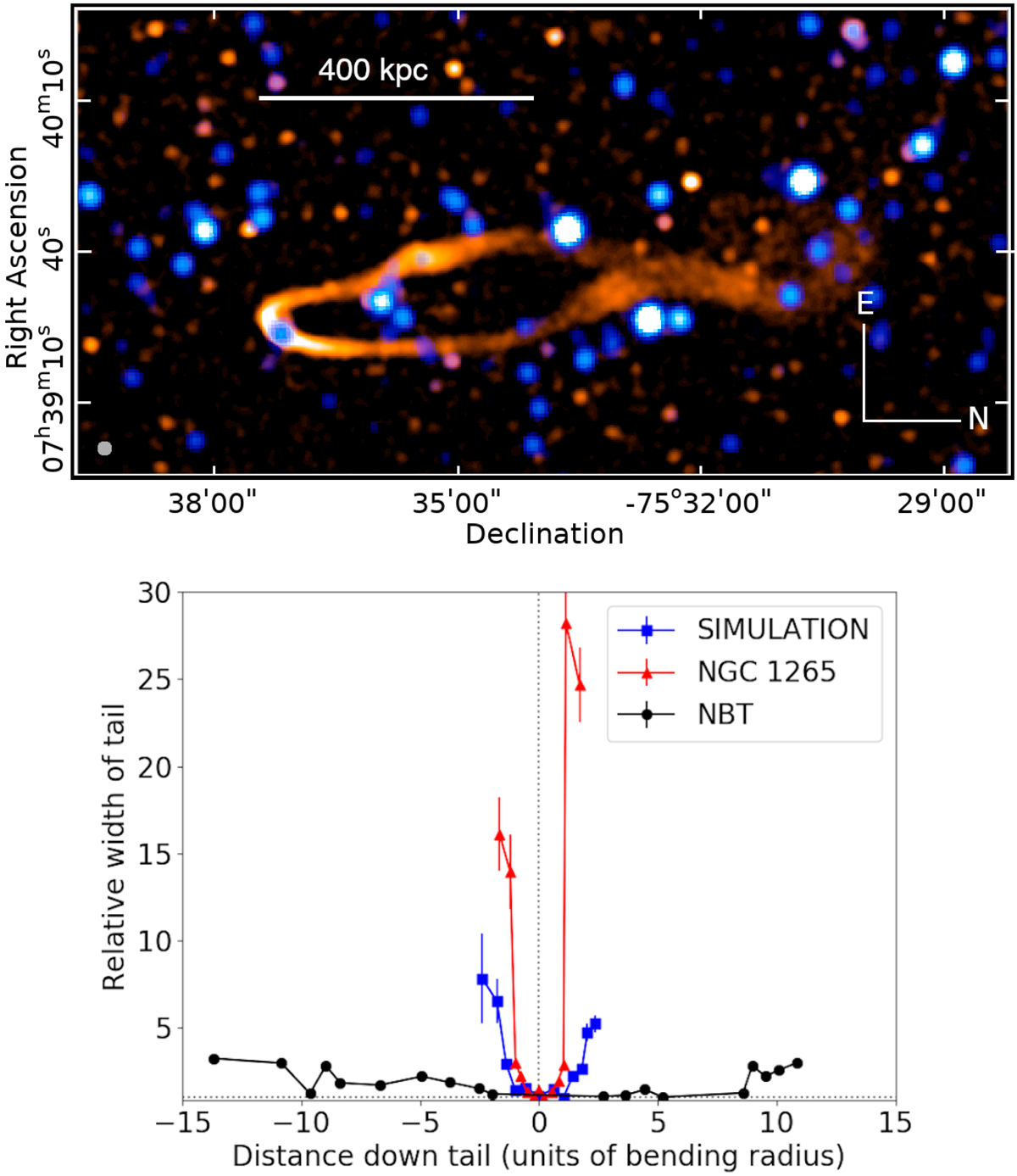Fig. 15.

Download original image
Depiction of the NBT, showing that it remains well collimated long after it bends, a unique behaviour. Top: MGCLS Stokes-I full-resolution (7.5″ × 7.4″) intensity image in orange, overlaid on the WISE W1 image in blue. The radio brightness scale is logarithmic, saturating at 0.2 mJy beam−1. The host, centred at the south end of the twin tails, is located at RA = 07h39m23.89s, Dec = −75° 37′11.3″. The physical scale at the host redshift is indicated, and the MGCLS synthesised beam is shown in lower left corner. Bottom: increase in jet widths, in units of the jet radius near the core, as a function of distance from the core. They show the dramatic difference between the NBT and a prototypical narrow-angle tail (NGC 1265, using the 3.7″ resolution map from Gendron-Marsolais et al. 2020) and a numerically simulated tail, from O’Neill et al. (2019).
Current usage metrics show cumulative count of Article Views (full-text article views including HTML views, PDF and ePub downloads, according to the available data) and Abstracts Views on Vision4Press platform.
Data correspond to usage on the plateform after 2015. The current usage metrics is available 48-96 hours after online publication and is updated daily on week days.
Initial download of the metrics may take a while.


